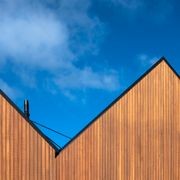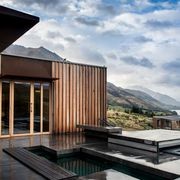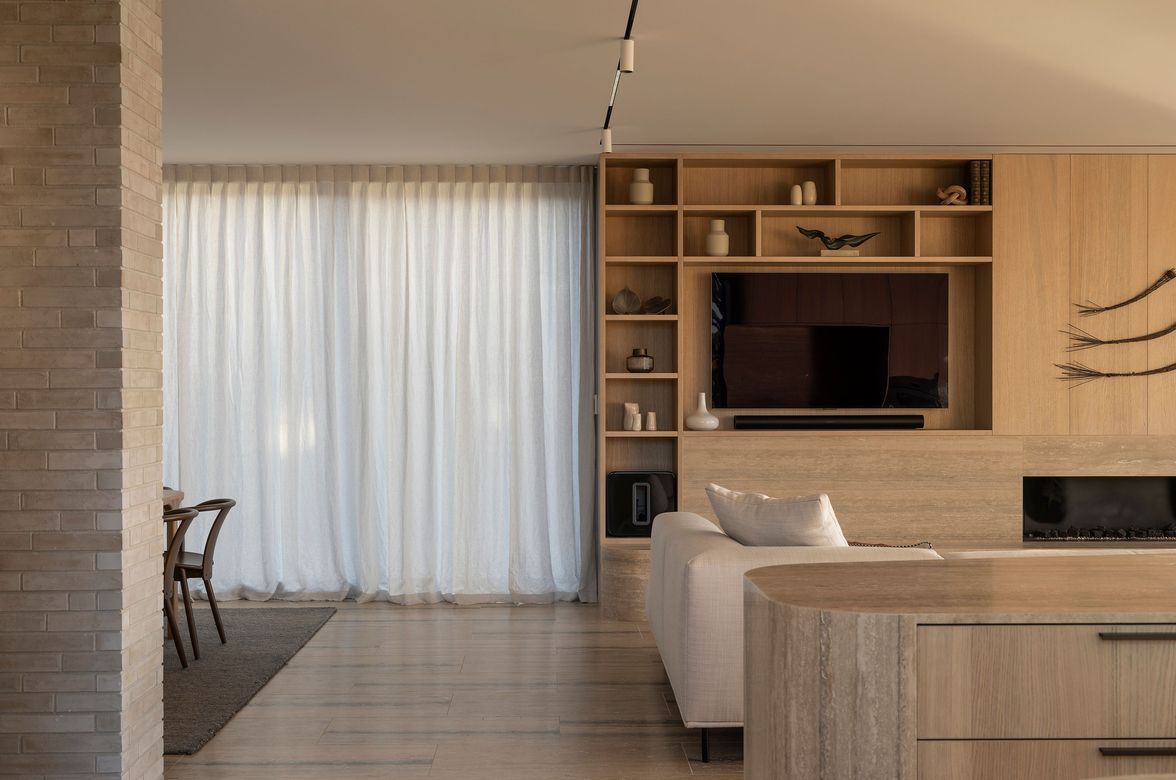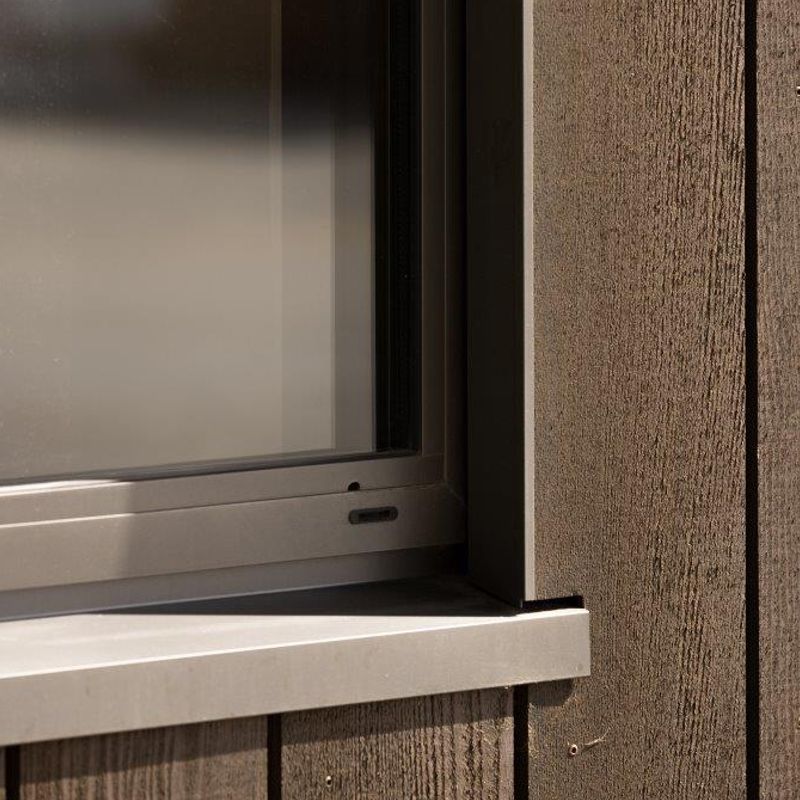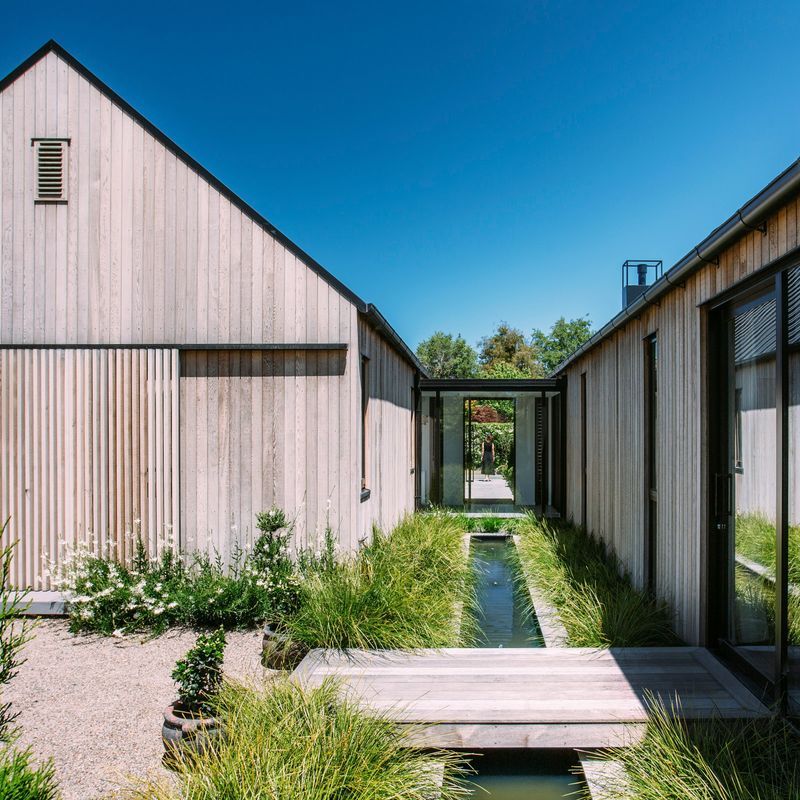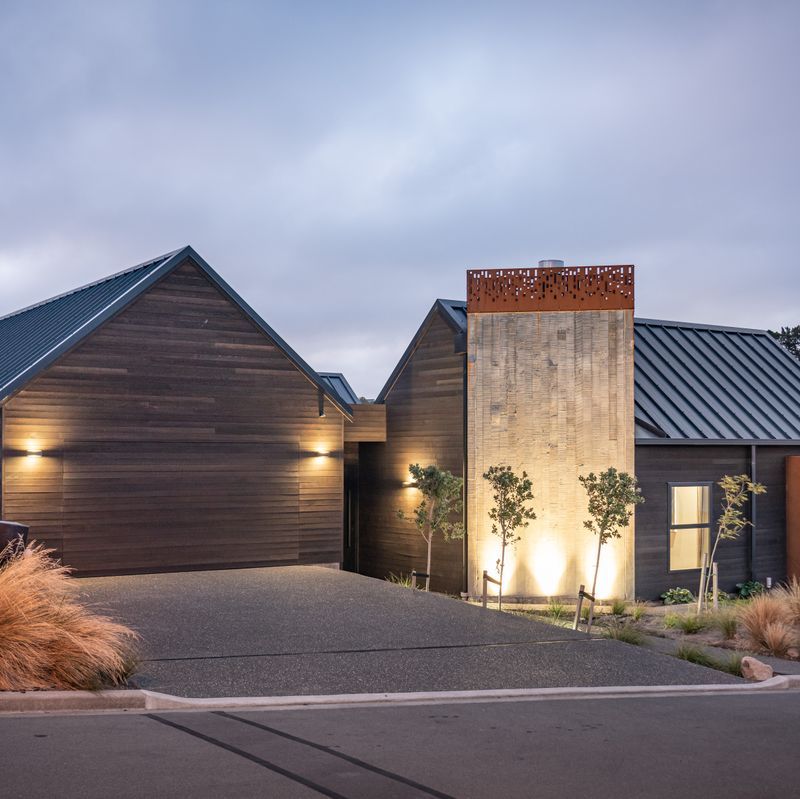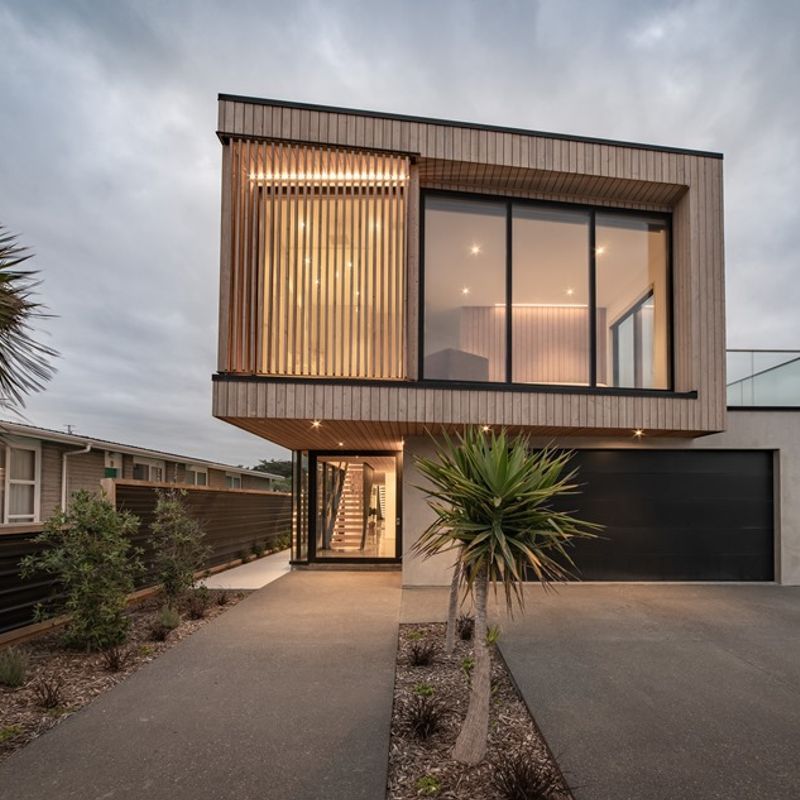RK Timbers Cladding Systems
RK TimbersRK Timbers' innovative range of timber cladding products have revolutionised the Cedar weatherboard market, providing practical solutions that improve performance, buildability and the aesthetics of timber cladding.
Vertical shiplap weatherboards continue to be the cladding of choice for many architecturally designed houses. Unique vertical shiplap innovations include the 45mm structural cavity batten system®, solid one-piece external corners, a suite of robust flashings, the INTERSET® recessed window flashing system and Workingspec - a new dimension to details.
In addition to Western Red Cedar, Rosenfeld Kidson can also offer timber alternatives European Larch and Truwood® - a thermally modified timber. We’re happy to discuss your building cladding options.
RK Timbers' Cladding Systems are CodeMark certified.
- CategoryTimber Cladding
- RangeRK Timbers
- BrandRK Timbers
RK Timbers Cladding Systems:
Vertical: Vertical Weatherboard System 45mm Structural Cavity.
Rk Timbers Vertical 45mm is an externally fixed wall cladding system. The system uses vertical Shiplap Cedar weatherboards and the RK Timbers RK-H 45x45mm structural horizontal cavity batten. The 45mm batten is fixed to the wall framing at between 400mm to a maximum 600mm stud centres or as per NZS 3604. Battens are set out horizontally at 400mm maximum centres. The cladding is fixed to the CS-H 45x45mm structural cavity battens.
Horizontal: RK Timbers Horizontal Weatherboard Cladding System.
Horizontal shiplap weatherboards for modern or traditional horizontal cedar cladding. Traditional rusticated horizontal cedar weatherboards are a derivative of the bevel back weatherboard and have a shiplap with a distinctive scalloped rebate allowing water to fall off. Rusticated weatherboards deliver a classic look and provide reliable performance. Reminiscent of rural buildings, and originally used for exterior cladding of barns, sheds and farm buildings, this cedar profile is renowned for its strength and robustness.
The profiled finish of horizontal weatherboards also accentuates the attractive natural features present in western red cedar, showcasing the beauty of this timber as a cladding material. Modern machining methods have enabled cedar timber suppliers to develop innovative new horizontal architectural profiles with a variety of lap and rebate detailing, providing a range of finished weatherboard alternatives to suit almost any application.
For this reason, rusticated weatherboarding has come of age and is no longer simply the preferred choice for cladding of rural buildings. This weatherboard type can be seen throughout the country, frequently featured as top-end house cladding in award-winning architecture.
Select finish alternatives, either bandsawn or dressed. Also, select from a range of tinted wood oils specifically formulated and factory applied to your cedar weatherboards. This will ensure that your building’s cladding system is compatible with the design intent and environment, while also improving the performance and durability of the cedar weatherboards.
Bevel Back: RK Timbers Bevel Back Weatherboard Cladding.
Dynamic and durable cedar cladding systems. Western red cedar is renowned as a superior exterior timber cladding material and bevel back cedar weatherboards provide a classic design element to any external cladding system. Bevel back cedar cladding is a tried and tested facade type that has stood the test of time. Add the many stunning design alternatives cedar timber provides and your exterior cladding will deliver longevity, performance and style.
Many of us are familiar with the black stained bevel back cedar weatherboards and crisp white joinery first seen in the early Vernon Brown houses scattered through Auckland’s Eastern Suburbs. Since the 1940s this style has developed and been refined to result in a well accepted aesthetic.
This durable and 'bulletproof' cladding type has become well accepted as a sophisticated building methodology that is known to add value and longevity. As they are well designed to allow air to ventilate and water to drain or dry, bevel back weatherboards are recognised as a robust cladding system with good weather-tight performance.
With a range of wood oil coating colour options, the tone of your bevel back cedar weatherboards can be adjusted to suit any taste and to complement any building design and its environment.
Introducing a choice in weatherboard texture gives further aesthetic flexibility. Bandsawn or dressed cedar board finishes can be selected, creating myriad opportunities for designers to create unique solutions for the wide range of landscape conditions that we encounter across New Zealand.
Board & Batten: RK Timbers Board & Batten Cladding System.
Superior performance vertical external cladding. Board and batten is a traditional vertical cladding system used extensively over the years on both residential homes and as a feature on commercial buildings. Preferred by many building authorities, architects, specifiers and building designers, western red cedar board and batten exterior cladding delivers superior weather tightness.
'Board and Batten' may conjure an image of simple ply cladding with timber battens covering the joints; but Cedarscreen’s western red cedar board and batten cladding system uses the more traditional method of wide solid timber cedar boards and matching battens to provide a high quality, resilient and elegant alternative.
As solid cedar timber becomes increasingly popular, and architects and homeowners respond to the need for long lasting, high quality cladding systems, traditional board and batten is making a comeback. With modern timber weatherboard profiles on offer and backed by an excellent track record, cedar board and batten is a popular alternative for cladding modern architectural buildings. Board and batten cedar cladding is especially in demand along New Zealand’s coastlines, and throughout the South Island, as architects draw on a traditional aesthetic that suits the impressive and demanding landscapes.
RK Timbers board and batten cladding system typically uses 180mm wide cedar boards laid directly over framing with an 8mm gap, which is then sealed with a batten. Board and batten external cladding provides more depth of relief than other profiled weatherboards like shiplap and bevel back. This robust system and the low shrinkage of cedar means that board and batten cladding can handle large variations in weather and harsh conditions and as such offers a high risk matrix rating. The generous and carefully designed weather grooving in combination with a setout that allows for natural expansion and contraction of the cedar provides an extremely robust and durable cladding.
Cedar board and batten cladding applied using traditional materials and proven systems gives a superbly elegant natural appearance that is equally at home in an urban context and within the rugged rural New Zealand aesthetic.
Combining cedar finish options (bandsawn and dressed) of board and batten cladding with a wide selection of wood oil colour-tone options, board and batten offer a vast palette for architects and designers to choose from.
ABODO®: Abodo Vulcan (thermally modified Radiata Pine) grow and manufactured in NZ.
RK Timbers is the exclusive NZ distibutor to the architectural market of Abodo, available in our range or profiles and cladding systems.
Abodo Vulcan is thermally modified New Zealand grown and manufactured radiata pine, engineered with patented vertical grain construction for superior weathering. Sustainably sourced from rapidly renewable pine plantations, it offers enhanced stability, reduced resin, and natural durability without chemicals. Available in architectural profiles and RK Timbers’ full range of cladding systems
Larch: RK Timbers Larch Cladding Systems.
European larch weatherboards for exterior cladding. European Larch offers an exciting new natural timber cladding option. RK Timbers Larch is sourced with FSC® certification providing independent assurance it is sourced from well-managed forests.
Larch has a pale appearance and is a warm mix of colours, from light reddish brown through to golden brown. When weathered the colour changes to a muted grey tone. With clearly marked annual growth rings, a straight grain and inter disbursed knots the timber displays attractive figuring with a contemporary look.
It is available in all Rk Timbners' Vertical, Horizontal, Bevel Back and Board & Batten cladding systems. Customised corner and jamb detailing have been developed to effortlessly blend with our range of compliant 28mm thickness Vertical and Horizontal shiplap weatherboards.
The extreme climate from which Larch originates produces slow-growing conditions, resulting in close growth rings and fine grain. Larch also possesses high resin content and coupled with its naturally high density, results in excellent durability properties.
These characteristics produce a timber of great depth and texture that is a unique alternative to other timber claddings in the market. Larch is a very different softwood to Cedar and offers a popular rustic, Nordic appearance. This timber is best used when a more configured grain structure, rustic knots and a uniform pale weathered tone is desired. Some surface checking does occur with Larch, adding to the rustic aesthetic.
Factory coating in our Larch-specific range of Dryden WoodOil clear, blondes and silver-greys further complement this distinctive material.
RK Timbers only sources Larch in ‘Unsorted I-III’ grade. This grade is the highest commercially available ‘appearance’ grade of Siberian Larch. The ‘Unsorted’ term is misleading and although the name would suggest that the timber has not been sorted, it actually means the opposite. In fact, the timber has been sorted into the highest three appearance qualities - I,II & III or ‘firsts’, ‘seconds’ and ‘thirds’ (or simply described as I-III).
Truwood®: Thermally Treated, Clear Grade, Low-density Hardwood.
RK Timbers also offers Truwood®. This beautiful product is thermally treated, clear grade, low-density hardwood. This timber is sourced with certification to be from well-managed forests. The thermal treatment provides a rich Teak coloured timber with great properties of durability and stability without any chemical treatment - just heat and wood.
Truwood is produced using the latest thermal modification technology, which involves applying heat at 160 - 230°C, water vapour and pressure to the timber.
Modified timbers are making an increasing inroad into the construction industry, as availability increases and their benefits are realised. Truwood offers increased durability, stability and aesthetics in a renewable timber that is readily available in clear, long lengths.
Truwood carries a Durability Class 2 and is considered more durable than other naturally durable cladding types available. Truwood is also very stable, due to the modification process. Since the cell structure of modified wood absorbs less water, the equilibrium moisture content of the timber is also reduced. Improved dimensional stability reduces movement in service such as cupping, as well as splitting and checking around fixings.
Truwood is an excellent choice for cladding and is available in a wide range of 19mm thick vertical and horizontal weatherboard profiles. The timber is profiled in accordance with NZS3617 and Branz Bulletin 411, with both vertical and horizontal profiles compatible with all standard RK Timbers system details. It is the ideal cladding solution where less frequent maintenance is required. An additional benefit of the reduced movement in service is the increased performance of coatings. Rk Timbers coat Truwood in a specifically formulated modern wood stains. This water-based stain has excellent water repellency and further improves the performance of the timber while providing a range of natural colour options from mid-brown to walnut and black.
Truwood also is well suited to many other applications. Its relatively low density makes it great for window frames, door, sliders, garage doors, louvres and gates, as well as other internal joinery applications.
Interset®: Recessed Window System.
RK Timbers offers the INTERSET® Recessed Window Flashing System for vertical and horizontal shiplap timber cladding. The system is comprised of a set of aluminium flashings and thermoplastic stop-ends that interlink to form a picture-framed window recess. The system enables aluminium windows to be recessed to the framing line from the outer façade, providing a natural 65mm deep window recess.
This clever solution achieves a clean and contemporary look but also improves thermal and weather-tightness performance.
INTERSET flashings are used exclusively in conjunction with the RK Timbers Vertical or Horizontal 45mm structural cavity systems, suitable for timber cladding options of Western Red Cedar, European Larch, Abodo or Truwood®, a thermally modified timber.
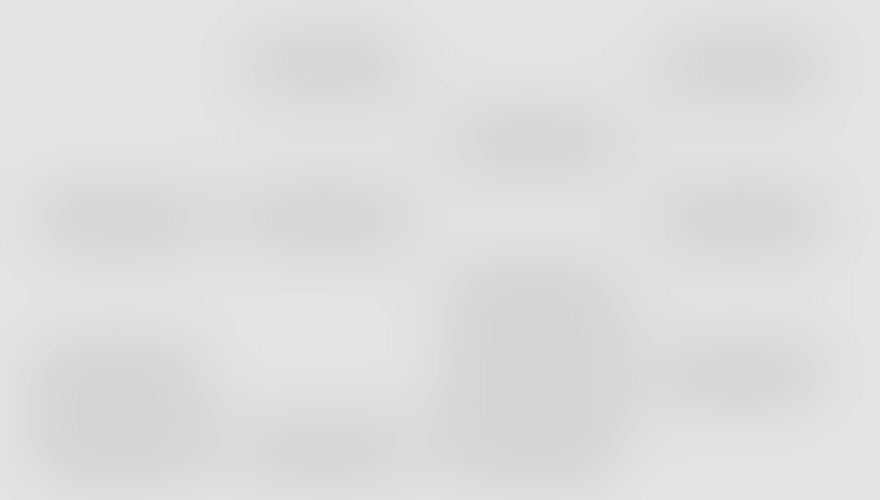
Projects featuring RK Timbers Cladding Systems
More from RK Timbers
For four generations, the inherent qualities and creative potential provided by timber have inspired us and driven innovation at RK Timbers.
If you need proof that the inventive spirit of Kiwis is alive and thriving, you only need to look at the way timber is being used to create spectacular spaces and objects throughout the country. We’re enormously proud to be involved with many of New Zealand’s finest builds, helping architects, designers, artisans and owners take their concepts from paper to the highest standards of craftsmanship.
- ArchiPro Member since2016
- LocationView all locations (+1)
- More information
RK Timbers














